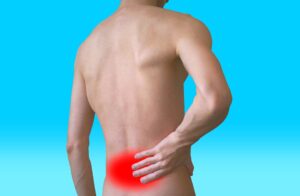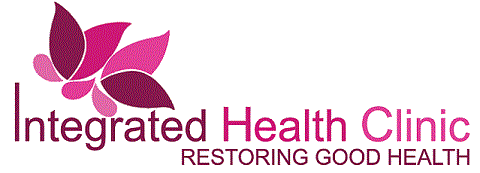Majority of the time there is no single reason for back pain, and similarly there may  not be one single cure. Lower back pain is one of the most common complaints that present to the GP or to practitioners of complementary therapy such as massage, acupuncture, osteopathy or chiropractic. Around 95% of acute low back pain is non-specific and may have been caused by bending the wrong way, lifting something heavy or aggravated by other conditions like arthritis, hairline spine fractures, spinal disc degeneration, kidney infections, cancer and others. Regardless of the cause back pain can be extremely disabling and almost everyone can expect to experience it at some time in their lives.
not be one single cure. Lower back pain is one of the most common complaints that present to the GP or to practitioners of complementary therapy such as massage, acupuncture, osteopathy or chiropractic. Around 95% of acute low back pain is non-specific and may have been caused by bending the wrong way, lifting something heavy or aggravated by other conditions like arthritis, hairline spine fractures, spinal disc degeneration, kidney infections, cancer and others. Regardless of the cause back pain can be extremely disabling and almost everyone can expect to experience it at some time in their lives.
There are times when back pain is clearly serious, particularly when it is associated with numbness, weakness or tingling in the legs. In such cases a visit to the doctor is a must. But for other more routine low back pain there are a few tips which can be tried at home.
- Ice or Heat ?: If you have physically injured the back by banging it then in the first 24 hrs cold packs can help to dull the pain and reduce inflammation. However after this, heat and particularly in the case of chronic back pain heat is the treatment of choice. It improves local circulation, relaxes the muscles and eases pain. Muscle spasms and trigger points respond better to heat.
- Have a hot soak: If more than 24 hours have passed since the injury occurred, ice will not help reduce pain or inflammation. Try soaking in a tub of hot water for 20 minutes or more. This will help ease the muscles and help you to relax. The addition of epsom salts will reduce inflammation.
- Keep moving: Keep mobile, but don’t overdo it. The spine likes movement and the worst thing you can do is stay still so carry on doing your daily activities as much as you can.
- Release Body endorphins: Our body naturally produces endorphins which help block pain signals. Endorphins also help to alleviate stress, anxiety and depression, which have been linked to worsening of chronic back pain. Some feel good measures include; meditation, aerobic or stretch exercises. Therapies like acupuncture and massage stimulate the production of endorphins.
- Emotional health: There is increasing evidence that our mental state and the ability to address stress determines whether we are able to more effectively mange pain. Back pain and other types of pain can be exacerbated by psychological and emotional issues. Complementary therapies can be useful to manage stress.
- Chamomile and ginger: Chamomile is a relaxant, whilst ginger has anti-inflammatory properties. Fresh ginger sliced (2-4) or grated boiled in two mugs of water until it is reduced to half the original volume will make a delicious and fragrant tea. Honey or sugar can be added for taste. Drink this 2-3 times a day. Grated ginger added to your vegetable juice is a good idea as well.
- Restorative sleep: Inadequate sleep aggravates back pain and enhances recovery. Sleep on a firm surface on your side to reduce any curve in your spine. Changing your sleep posture can also be helpful.
. - Massage, Essential oils & Complementary therapies: Self massage (or from a trained professional) and using essential oils can help your muscles relax and relieve pain. Essential oils such as eucalyptus, camphor and black pepper blended in almond or grapeseed oil have muscle relaxant and anti-inflammatory actions. Complementary Therapies like acupuncture, osteopathy, chiropractic, Alexander technique can also be very effective.
- Pepper pain relief: Capsaicin (pepper) cream or ointment containing 0.075% or 0.025 capsaicin applied on the pain surface can help alleviate pain. It may take a few weeks for the full effects to be felt. Capsaicin acts by desensitising the sensory receptors in the skin by depleting the body’s supply of substance P, a chemical substance in nerve cells essential for the transmission of pain signals to your brain. Hence lower levels of substance P in the circulation reduce the pain sensations.
- Posture: Modern lifestyle makes us spends more time sitting down, whether it’s at work or home. Long periods of sitting or static positions can be more harmful when you have back pain. Sitting properly can minimize these effects. Avoid slouching. Correct posture in a chair means having all the bones in your spine lined up neatly, like a stack of perfectly aligned blocks. This means keeping your feet flat on the floor and your computer keyboard within easy reach so you’re not leaning forward. This is one part of proper office ergonomics.
- Stretch: Don’t just sit or lie down. If you have a stretching routine like yoga then do it every 2-3 hrs. The body muscles and bones are all interconnected so a whole body stretch is important. A few simple stretches are;Overhead stretch: Lie on your back with arms on the side. Slowly raise your stretched arms overhead and stay in the position for 15-30 sec. Next, gently pull one knee as close as you can to your chest again stay in this position for 15-30 sec, and release the leg back to its original position. Do this with the other leg. Repeat 5 -10 times.
Knee-rolls: Lie down with your arms stretched to the sides bend your knees and roll the knees to one side. Hold the stretch for five breaths and then return it back to the middle. Do this on the other side. Repeat 5 -10 times.
See exercises here. - Structural decompression: Structural decompression helps to improve posture and eliminate back pain. When done properly it helps to lengthen the hip flexor muscles and stabilize the spine, thus supporting the core abdominal muscles. Overall, this strengthens the back and lifts and opens the chest. Below is a video of yoga postures for structural decompression.
